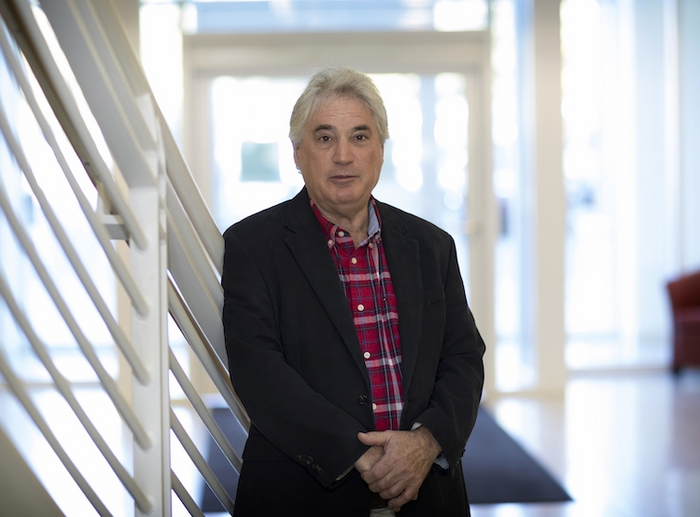Reviewed by Danielle Ellis, B.Sc.Sep 28 2022
Scientists from the University of Virginia School of Medicine and their colleagues have discovered a decades-old mystery regarding how E. coli and other bacteria move.
 Edward H. Egelman, PhD, of the University of Virginia School of Medicine, and his collaborators have used cryo-electron microscopy to reveal how bacteria can move—ending a mystery of more than 50 years. Egelman’s prior imaging work saw him inducted into the prestigious National Academy of Sciences, one of the highest honors a scientist can receive. Image Credit: Dan Addison | University of Virginia Communications
Edward H. Egelman, PhD, of the University of Virginia School of Medicine, and his collaborators have used cryo-electron microscopy to reveal how bacteria can move—ending a mystery of more than 50 years. Egelman’s prior imaging work saw him inducted into the prestigious National Academy of Sciences, one of the highest honors a scientist can receive. Image Credit: Dan Addison | University of Virginia Communications
Bacteria move forward by coiling long, threadlike appendages into corkscrew shapes that function as improvised propellers. Researchers are mystified as to how they do this because the “propellers” are formed of a single protein.
A worldwide team headed by UVA’s Edward H. Egelman, Ph.D., a pioneer in high-tech cryo-electron microscopy (cryo-EM), solved the mystery. Cryo-EM and highly sophisticated modeling were utilized by the researchers to disclose what no ordinary light microscope could see: the odd structure of these propellers at the level of individual atoms.
While models have existed for 50 years for how these filaments might form such regular coiled shapes, we have now determined the structure of these filaments in atomic detail. We can show that these models were wrong, and our new understanding will help pave the way for technologies that could be based upon such miniature propellers.”
Edward H. Egelman, Department of Biochemistry and Molecular Genetics, University of Virginia School of Medicine
Blueprints for bacteria’s “supercoils”
Different types of bacteria have one or more flagellum, or flagella, which are appendages. A flagellum is made up of thousands of subunits, all of which are identical. If such a tail is straight, or at least somewhat flexible, it would prevent the bacteria from moving. This is due to the fact that such forms cannot create thrust.
A revolving, corkscrew-like propeller is required to move a bacterium forward. Researchers call the formation of this structure “supercoiling,” and they now know how bacteria do it after more than 50 years of research.
Egelman and his colleagues discovered that the protein that constitutes the flagellum may exist in 11 distinct states employing cryo-EM. The corkscrew shape is formed by the precise combination of these states.
The propeller in bacteria is very different from the propeller utilized by the hearty one-celled organisms known as archaea. Archaea can be found in some of the most extreme conditions on the planet, including practically boiling pools of acid, the deepest parts of the ocean, and petroleum reserves deep underground.
Cryo-EM analysis by Egelman and colleagues revealed that the protein that makes up the flagellum of one type of archaea, Saccharolobus islandicus, exists in 10 different states. The filaments produced typical corkscrews, despite the fact that the details were very different from what the researchers had seen in bacteria.
Researchers contend that this is an instance of “convergent evolution,” which happens when nature accomplishes similar outcomes using completely different strategies. This shows that although the form and function of propellers in bacteria and archaea are similar, the species separately evolved those traits.
As with birds, bats, and bees, which have all independently evolved wings for flying, the evolution of bacteria and archaea has converged on a similar solution for swimming in both. Since these biological structures emerged on Earth billions of years ago, the 50 years that it has taken to understand them may not seem that long.”
Edward H. Egelman, Department of Biochemistry and Molecular Genetics, University of Virginia School of Medicine
Egelman’s prior imaging work won him admittance to the National Academy of Sciences. one of the highest honors a scientist can receive.
Source:
Journal reference:
Kreutzberger, M. A. B., et al. (2022) Convergent evolution in the supercoiling of prokaryotic flagellar filaments. Cell. doi.org/10.1016/j.cell.2022.08.009.